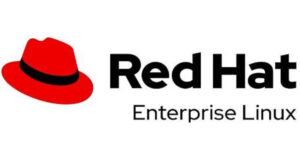
Linux, known for its robustness and versatility, is a powerhouse in the world of operating systems. One of its core aspects is the file system, a structured and logical layout that manages how data is stored and retrieved. Understanding the Linux file system is crucial for anyone looking to delve into the Linux environment. This article aims to demystify the complexities of the Linux file system, providing a clear and comprehensive guide.
1. The Hierarchical Structure
At its heart, the Linux file system is hierarchical, much like a tree with branches and leaves. At the top of this hierarchy is the root directory, denoted by a slash (/), from which all other directories branch out. This structure ensures an organized and systematic arrangement of files.
2. Key Directories Explained
- /bin and /sbin: These directories contain essential user and system binaries (executables), respectively. Programs like ls, cp, and mv reside in /bin, while system administration binaries like iptables and reboot are in /sbin.
- /etc: This directory holds system-wide configuration files. It’s where you’ll find configuration files for installed applications.
- /home: Each user on the system has a directory in /home. It contains personal files, such as documents, downloads, and settings.
- /root: The home directory for the root user (the system administrator), separate from /home for security reasons.
- /var: Short for variable, this directory contains files that are expected to grow over time, like logs (/var/log) and mail (/var/mail).
- /usr: This is where user-installed applications and their associated files reside. It’s like the ‘Program Files’ in Windows.
- /dev: Contains device files that represent hardware components or other system devices.
- /tmp: A temporary space where programs can store temporary files.
3. File Types and Permissions
In Linux, everything is treated as a file, whether it’s a text document, a directory, or a device. Linux also implements a robust permissions system that controls who can read, write, or execute a file. Permissions are crucial for maintaining system security and integrity.
4. Filesystem Types
Linux supports various filesystem types, like ext4, xfs, and btrfs. Each has its characteristics and benefits, such as journaling in ext4, scalability in xfs, or snapshot and rollback capabilities in btrfs.
5. Navigating the File System
Navigating the Linux file system can be done through the command line or graphical file managers. Common commands include cd (change directory), ls (list files and directories), and pwd (print working directory).
6. Mounting and Unmounting
Linux uses a process called mounting to access storage devices. When a storage device is mounted, its file system is made accessible at a particular directory. Conversely, unmounting detaches it, ensuring data integrity.
7. Symlinks and Hardlinks
Links are a vital feature in Linux. A symlink (symbolic link) is a shortcut to another file, while a hardlink is a direct link to the data on the disk. Understanding these links is important for efficient file management.
Conclusion
The Linux file system is a marvel of design and efficiency, emblematic of Linux’s power and flexibility. Whether you are a system administrator, a developer, or a curious enthusiast, a thorough understanding of the Linux file system is a valuable asset. By mastering its structure and nuances, you unlock the full potential of the Linux operating system, allowing you to manage and navigate your system with confidence and precision.



